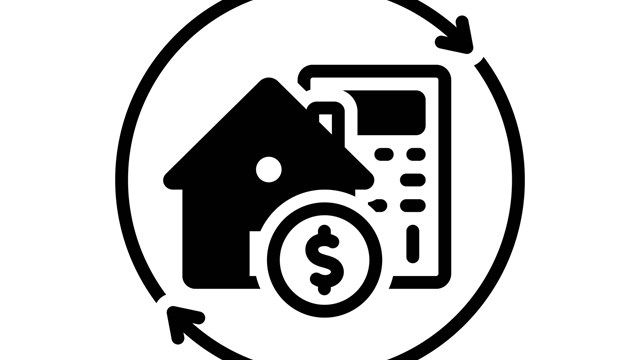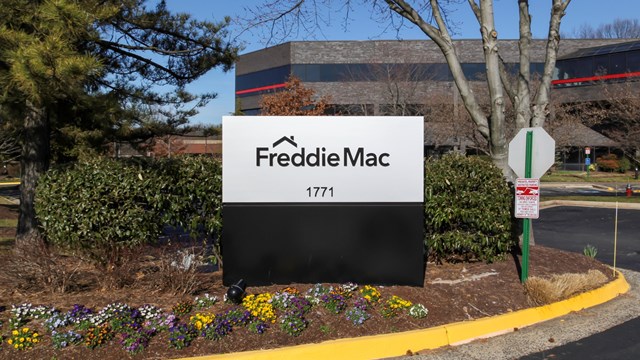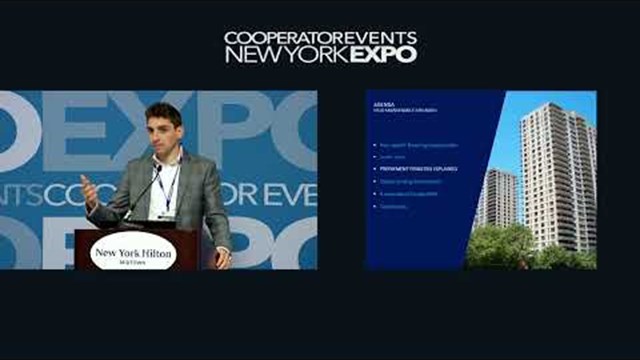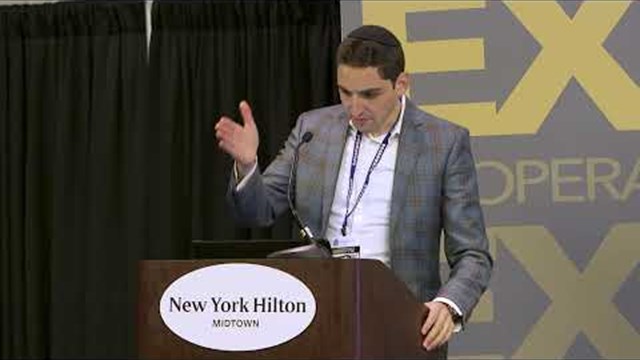
Home comes in many shapes and sizes. Some prefer the elegance of prewar apartment buildings, while others lean towards the high-tech brilliance of a brand-new building. And there are those who like the small-town, neighborly feeling of a brownstone with only four, five or six units. Fortunately, in a city the size of New York, there’s a great deal of variety, no matter what your taste.
But for those who prefer a smaller, more tight-knit community, living in a co-op with just a few units comes with its own set of unique challenges — and many of those challenges involve financing, both for the building as a whole and its individual units.
Vacancy Issues
Lenders like both stability and the ability to spread risk. Interestingly, stability is often a strong characteristic of small co-ops. Residents buy in and tend to stay for decades, even more so than in larger buildings. In brownstones, which represent a large proportion of small co-ops, each apartment is unique. The decision to buy is often predicated upon the purchaser finding a space that is exactly what they are looking for, as opposed to the more ‘cookie-cutter’ units available in much larger, more recently-constructed buildings.
On the other hand, the ability to spread risk is substantially reduced in a small co-op. It’s simply a matter of numbers; you have four or six shareholders, instead of four or six dozen or more. According to Harley Seligman, Vice President at the National Cooperative Bank (NCB), a national lender dedicated to co-op financing: “The big issue [with small buildings] is that your collateral is less dispersed amongst the shareholders than in a larger building. That’s the crux of the issue. A lender would naturally rather have a mortgage on 50 units than two units. The other issues that apply to small co-op buildings reflect more practical matters — i.e., if only three people live in the building — who’s keeping an eye on things, and running the building?”
From a lender’s point of view, says Stuart Bruck, Director of Mortgage Brokerage at Time Equities in New York City, “lenders underwrite a co-op in two ways. One is to value the property as though it was a rental. When there are four or six units in the building and one becomes vacant, the percentage of vacancy relative to the whole property is dramatic.” Two vacancies in a 40-unit property is a 5 percent vacancy rate, which may be acceptable to a lender — but two vacancies in a four-unit building is 50 percent. That can end a deal right there.
Arrearages can create a similar problem. Due to the limited number of shareholders, says Bruck, “arrearages from one tenant, or a history of it for that matter, can cause a declination of the deal by a lender.” As with the case with vacancies, if one of four cooperators are historically late with their monthly maintenance payments, the property may not have the cash on hand to pay its bills, or its monthly mortgage payments. And that’s a big red flag for lenders.
On a related note, Seligman points out that small co-ops often don’t complete annual audited financial statements due to the cost of preparing them. “We love audited financial statements,” he says, “because they tell a story. Often these very small co-ops are only doing tax returns. There’s no accountant looking at the bigger picture. We don’t like that.”
Self-Management Issues
Many small co-op buildings do not retain full-time, third-party management for their properties for exactly the same reason they don’t employ full-service accounting professionals: it’s too expensive. This is another situation that can prevent small co-op properties from easily obtaining financing.
“These buildings tend to be self-managed,” says Seligman. “Usually, one person in the building takes the responsibility of overseeing the property. We get calls from them, and often they’re tired and frustrated, and are seeking relief from the responsibility. That’s not good for the building. Self-management is a problem for us. We prefer to see professionals involved.”
Yet another challenge for small co-ops and the lenders that provide financing to them is the overall financial health of a property. Along with the fact that these corporations rarely have professional financial supervision in the form of audited accounting, and may lack the intensive day-to-day oversight third-party management provides, they also may not be in the best shape financially. Seligman explains that “co-ops not raising maintenance for years at a time is a problem. We have seen recently, and especially in brownstone buildings, the situation where a new person buys in — usually someone much younger than the other existing residents — and all of a sudden they look around, and realize their neighbors have been there forever. The older cooperators may be on fixed incomes. They have had very low maintenance for decades. The co-op may be running at a deficit, or barely breaking even. The new shareholder sees that the roof or façade or both may need work or replacement. The hallways need renovation, the common garden needs work. A large amount of money is needed to fix up the place, and that turns into a battle.”
To avoid the shock a large assessment would cause to shareholders — particularly those on limited or fixed incomes — Seligman suggests that these types of co-ops institute small, predictable annual maintenance increases so that everyone gets accustomed to paying a bit more each year. This softens the blow when a larger increase is needed. Lenders also want to see healthy reserve funds. If the revenues from the maintenance increases aren’t needed for monthly expenses or maintenance, they can be placed in the reserve fund and used when they are needed.
Rates, Terms and Closing Costs
“Small co-ops,” Bruck says, “are priced at a premium for financing. Banks who do these kinds of loans typically charge three-quarters to 1 percent more in interest, and a 1 percent premium on origination fees. The term of the loan is generally five years, with a five-year extension.” Barry Korn, Managing Director at Barrett Capital, a New York-based finance provider also active in Chicago, concurs. “Rates will be higher,” he says. “Fees, as a percentage of the loan size, will be higher as well.”
Closing costs are another factor in refinancing small co-op underlying mortgages. Generally, fees are charged based on the size of the mortgage, but in small co-op loans that standard changes. Legal work for a $250,000 mortgage is essentially the same as it is for a $2,500,000 mortgage. Lawyers charge hourly fees. Those fees will ultimately be similar for both loans, therefore representing a much larger percentage of the overall loan amount for the small loan. The same is true for the property appraisal and title charges, among other fees associated with closing a mortgage. Co-op owners in small properties should be aware and prepared for this inevitability.
What About Condos?
Unlike co-ops, condominiums do not have underlying permanent mortgages. What happens when a very small condo association needs to borrow a small amount of money? Korn has provided some insight. As is the case with small co-ops, loans for very small associations are more difficult to come by than for larger associations, and more expensive, if only for their size. There are few lending institutions willing to provide loans of this size.
Korn recently provided a loan to an eight-unit condominium association in Williamsburg, Brooklyn for façade restoration in the amount of $145,000. The collateral for the loan was an assignment of common charges, Korn says, “Therefore the underwriting involved stringent criteria on delinquencies.” Reliability of cash flow becomes crucial to this financing.
Andrew Freedland, a partner at Anderson Kill, a law firm based in Manhattan, explains that assignment of common charges is, “part of a UCC1 [Uniform Commercial Code-1]. There’s a lien against common charges, and there’s a separate agreement about the lien. This type of loan is an unsecured loan. It’s like equipment leasing. The collateral includes all debtor receivables, all reserves and other bank accounts, and all equipment and intangibles. Basically, everything and anything.”
Individual Unit Financing
The same factors that affect the financing of underlying permanent mortgages in small co-op buildings can also affect the financing of individual units. The most significant of these is the requirement that the co-op be at least 51 percent owner-occupied. If it’s a four unit co-op and two units are sublet, the co-operators will have difficulty refinancing their individual units. Robbie Gendels, also of NCB, says: “Potential loans must meet FNMA [Federal National Mortgage Association, also known as Fannie Mae] guidelines. If they don’t, we can provide financing through our portfolio. Percentage of owner-occupied units is the biggest potential problem. The other is closing costs, which can be proportionally higher. It just more difficult.”
To avoid these pitfalls, owners and purchasers of units in smaller buildings may have to absorb the proportionally higher costs of third-party management, accounting, and the oversight necessary to satisfy lenders when financing is needed. Additional attention should be paid to exhibiting a high level of financial health by maintaining a respectable reserve fund to be used when circumstances necessitate. Thought should even be given to building up enough funds in reserve, so when their small underlying permanent mortgage comes due, they might have enough funds in reserve to simply pay the mortgage off altogether.
In the final analysis, a choosing of one’s home is a very personal decision, and there is certainly a place in the market for unique units in small, intimate properties that offer a level of charm and specialty often not found in larger buildings or developments. However, buyers and owners of these units must keep in mind the challenges these types of properties pose.
A.J Sidransky is a writer/reporter for The Cooperator and the author of several published novels.









Leave a Comment